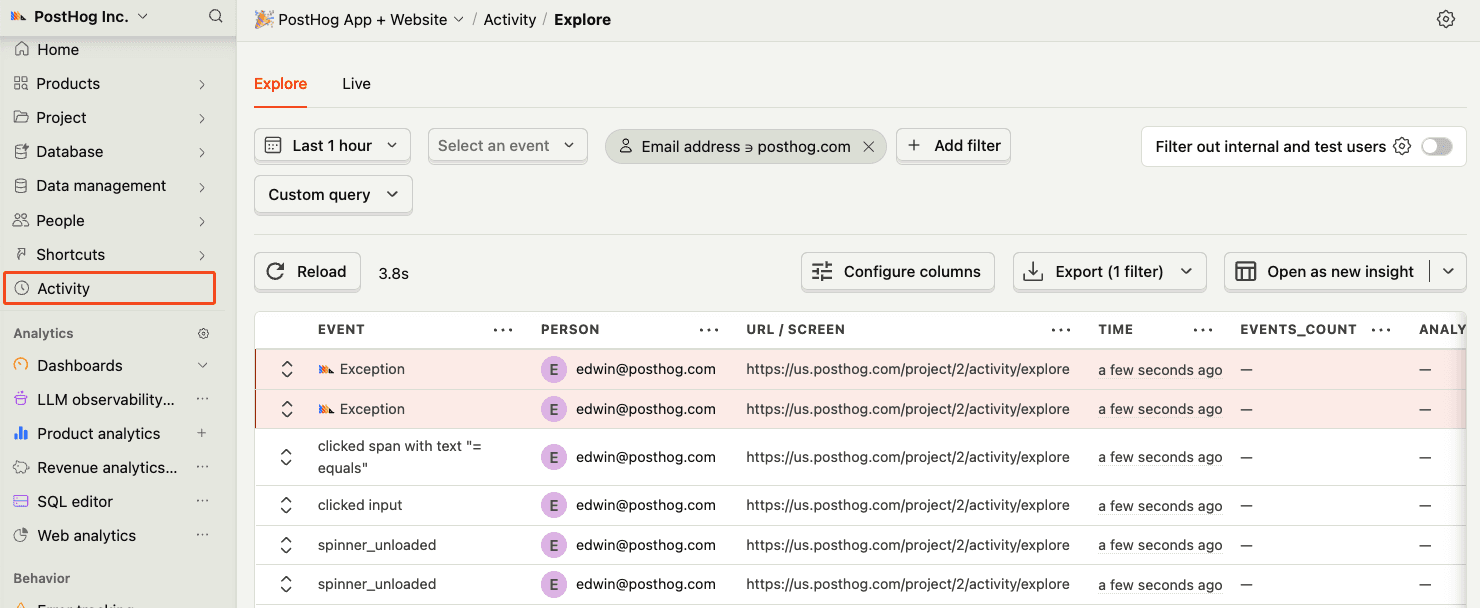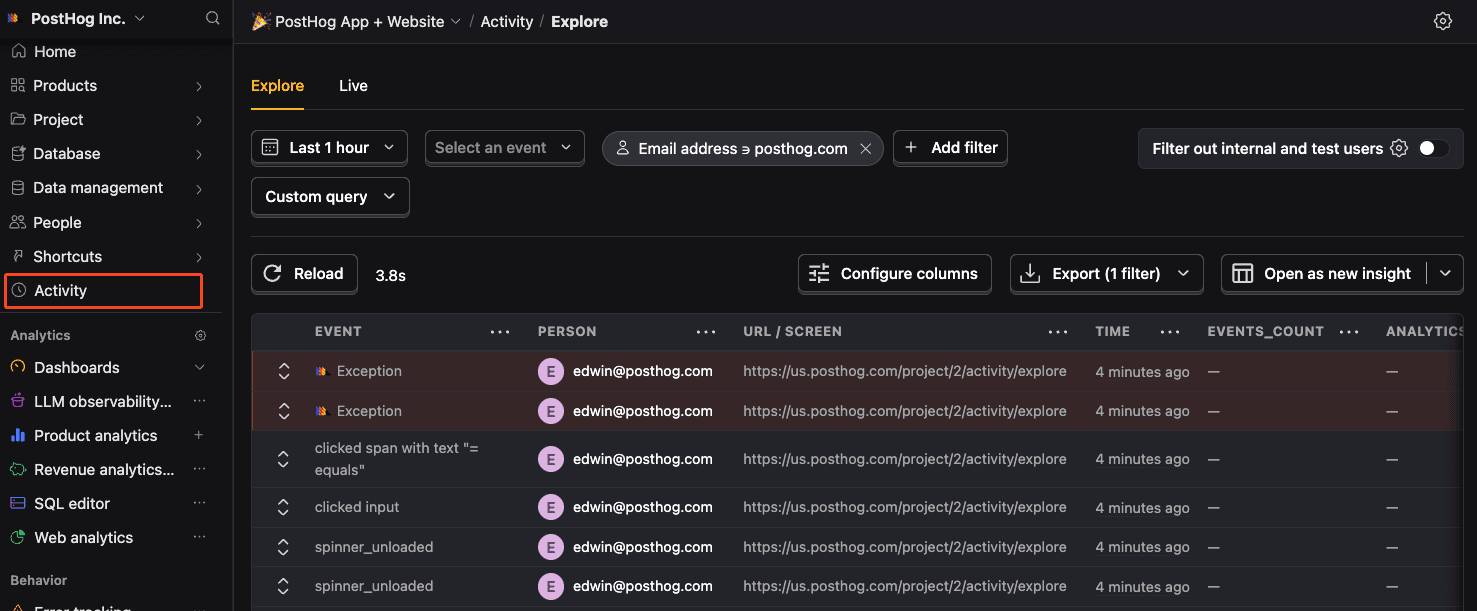Android error tracking installation
Contents
We currently don't support source code context associated with an exception.
These features will be added in a future release.
- 1
Install PostHog Android SDK
RequiredSDK version requirementA minimum SDK version of 3.27.1 is required, but we recommend keeping up with the latest SDK version to ensure you have all of error tracking's features.
The best way to install the PostHog Android library is with a build system like Gradle. This ensures you can easily upgrade to the latest versions.
All you need to do is add the
posthog-androidmodule to your App'sbuild.gradleorbuild.gradle.kts:app/build.gradleConfiguration
The best place to initialize the client is in your
Applicationsubclass.KotlinStack traces in ComposeIf you're using Jetpack Compose, we recommend adding source information to your stack traces to improve their readability.
- 2
Set up exception autocapture
RecommendedClient-side configuration onlyThis configuration is client-side only. Support for remote configuration in the error tracking settings will be added in a future release.
You can autocapture exceptions by setting the
errorTrackingConfig.autoCaptureargument totruewhen initializing the PostHog SDK.KotlinWhen enabled, this automatically captures
$exceptionevents when errors are thrown by wrapping theThread.UncaughtExceptionHandlerlistener. - 3
Manually capture exceptions
OptionalIt is also possible to manually capture exceptions using the
captureExceptionmethod:KotlinThis is helpful if you've built your own error handling logic or want to capture exceptions that are handled by your application code.
- 5
Upload mappings
RecommendedProGuard/R8 mappingsThis configuration is required if your app has minified builds (isMinifyEnabled=true) enabled for demangling stacktraces.
Great, you're capturing exceptions! If you serve minified bundles, the next step is to upload mappings to generate accurate stack traces.
Let's continue to the next section.










